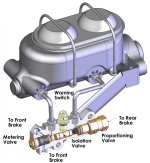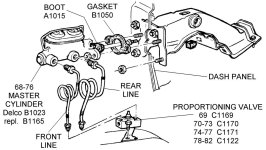I corrected that this evening and the truck will stop now much better. Do you think that would affect the bleeding of the brakes?
Yes, definitely.
While it does not always, it's certainly capable of keeping the bleeding process from being complete because the caliper is not able to do it's thing.
The pedal feels mushy and goes all the way to the floor.
You will have to bleed it fully again, at least in the front. Now that the calipers can move, any bleeding you did before was not complete.
But you should also re-adjust the rear brakes tight again. Unfortunately, for your locking up issue.
As for the rears, they are still locking up. Don’t do it every time but will when I apply hard brake.
Unfortunately, you should re-tighten the rear brakes so that they are at least where they should be so you can continue tracking down the underlying problem. Loosening them up was just a Band-Aid to this point.
And if you have not re-bled the fronts yet and still have a mushy pedal, you should not be testing it until you get that critical step done. Any locking up of the rear is at least in part because the fronts can't do their job yet.
And with the new style proportioining valve, any time you bleed the fronts you need to pull the little needle thingy out so that fluid can flow to the fronts under even light pressure.
It's a "delay valve" to keep the fronts from being applied before the rears. It's a stability aid.
Thinking about the adjustable valve but, Im going to take a hard look at the shoes and springs and wheel cylinders and see if i missed anything.
The standard prop valve is generally pretty good, but our vehicles are no longer stock so I like adjustable ones in most cases.
With Broncos being nowhere near their original "balance" overall (bigger tires, higher center of gravity, more weight too even....) a manually adjustable prop valve is likely the best way to get the perfect balance in braking to the way the individual owner likes it.
Personally, I like the rears to lock up just a gnat's hair before the fronts. But the generally accepted industry standard is to have the fronts lock up first so you are theoretically less liable to swap ends when the skidding rear starts to come around.
I just don't like the loss of control that the fronts being locked up imparts, and like to know when it's coming. I've always found it pretty easy to keep the rear from coming around in a panic/rear-skid situation. I'm sure that's not the case in every set of conditions, but so far, so lucky for me.
Paul












